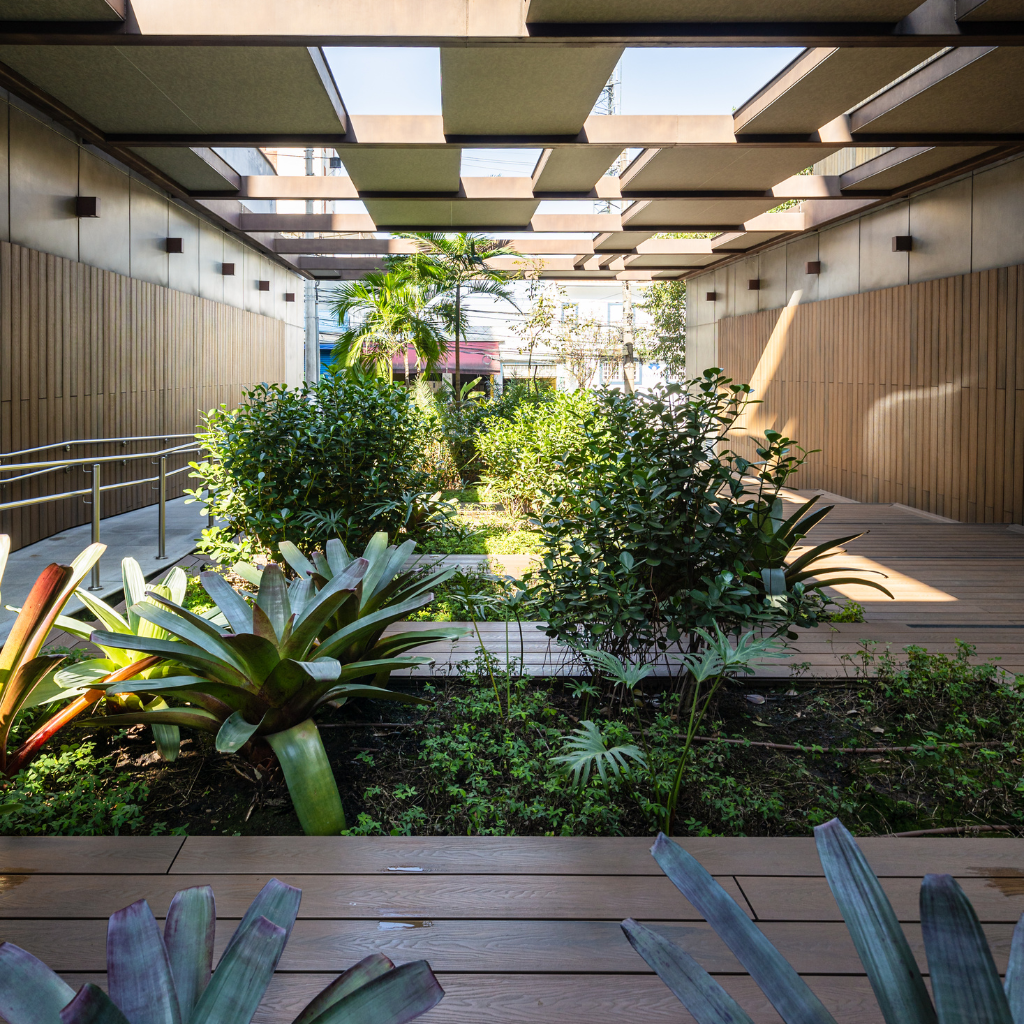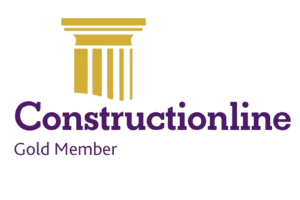Introduction
Office refurbishment can transform workplaces by incorporating multi-functional office furniture, innovative storage solutions, and thoughtful design elements like biophilic integrations to enhance aesthetics and functionality. Flexible layouts, ergonomic furniture, and strategic use of natural light elevate employee comfort and productivity, reflecting the brand’s identity through intentionally designed workplace design. Adopting these ideas maximizes space and sets a strong first impression, creating a dynamic and efficient environment that meets various professional needs. The right places for new furniture and stylish fixtures contribute to an ambience that attracts top talent, clients, and customers alike, while colour psychology and art add a sense of luxury and peace.
How Can You Maximise Your Office Space During a Refurbishment?
Maximizing office space during refurbishment involves strategic planning, detailed research, and the ability to decide on solutions that complement the surrounding environment and business goals.
Techniques such as employing multi-functional office furniture, optimizing vertical spaces, and prioritising better use of space can transform even small offices into efficient work environments. Consider stairs or loft stairs design carefully, as the height and steepness can impact safety and usability.
Additionally, partition walls and thoughtful storage solutions help store materials effectively while minimising distractions and maintaining a clean reception or waiting area that makes a great first impression. Avoid nasty surprises by consulting with experts early in the project and planning the fit-out in stages to minimise disruption.
What are the best office space utilization techniques for small office Refurb ideas?
When refurbishing a tiny space or office, every square inch counts, so an essential guide to space optimization is crucial. Efficient use of space is key in optimizing a limited area; applying principles of flexibility and adaptability lets the employer and employees operate with freedom and focus. From an HR perspective, a well-optimized workspace not only boosts productivity but also enhances employee wellbeing and morale. Utilizing vertical space for storage and incorporating moveable walls or screens can transform the functionality of the workspace, promoting a more dynamic and supportive environment.
Innovative desk area solutions, including sit-stand desks and lockers, and flexible design elements, are essential for maximizing space utilization and employee happiness. Below is a table highlighting effective office design strategies for small office refurbishment ideas, with considerations for acoustics and ventilation to improve wellbeing:
| Strategy | Description | Impact on Space |
|---|---|---|
| Vertical Storage | Use of upper wall space for shelving and cabinets | Maximizes floor area |
| Moveable Walls | Flexible partitions to alter room sizes | Adaptable layout |
| Multifunctional Furniture | Furniture that serves multiple purposes | Reduces clutter |
| Optimized Desk Areas | Custom-sized desks to fit space | Efficient workspace |
| Design Elements | Smart color and lighting choices | Enhances perception |
These workplace design strategies guarantee that even small offices can achieve a spacious and productive environment.
How to Maximise Space with Smart Storage Solutions?
Building on the strategies outlined for optimizing small spaces, smart storage solutions play a significant role in further enhancing spatial efficiency during an office refurbishment.
Effective space planning, along with the ability to carry out recycling and install energy-efficient fixtures, is key to this process, as it ensures that every square foot of the office is used strategically to support both function and style. It also allows businesses to seamlessly transition between different types of work modes and layouts as needs evolve.
By integrating innovative office design ideas that incorporate multi-functional furniture and built-in storage units, businesses can maximize the utility of their workspace. These innovative storage solutions are tailored to fit seamlessly into the interior, preserving decor while enhancing usability and function.
Utilizing vertical space for storage helps free up valuable floor area, making the office appear larger and more organized. Practical office closet refurbishment ideas suggest using flexible storage solutions that can be easily rearranged as needs change, ensuring adaptability and efficiency without compromising design.
As part of comprehensive space planning, these adaptable solutions contribute to a more streamlined, stylish, and sustainable office environment that supports wellness, avoids distractions, and allows employees to concentrate.
How to Use Partition Walls Effectively?
While innovative storage solutions are essential, the strategic use of partition walls can considerably enhance the functionality and flexibility of office space during refurbishment.
Implementing partition walls as part of office refurbishment solutions allows for the creation of adaptable workspaces that evolve with changing office design trends, business goals, and operational needs.
These movable barriers not only optimize space but also contribute to a better working environment by providing privacy, improving acoustics, and creating quiet focus areas without permanent structural changes. In the design and build phase, incorporating partition walls can lead to a more efficient use of space and furnishings in dedicated rooms, enhancing the overall workflow and employee wellbeing, resulting in a more comfortable working environment. This flexibility allows employees to work in a setting that suits their needs, fostering greater productivity and a positive atmosphere in the office.
Ultimately, this approach supports dynamic office layouts, diverse settings, and break areas, aligning with current and future refurbishment objectives to create a more inclusive and productive workplace.
What are the Key Elements of Office Design?
When considering key office design elements, evaluating how ergonomic furniture enhances employee comfort and efficiency is essential. Incorporating colour psychology helps create moods that encourage productivity and relaxation, with blue and green tones frequently used to promote calm and creativity.
The infusion of natural light elevates aesthetics, boosts wellness, and plays an important role in employee engagement and mental health. Thoughtful office space design directly influences worker well-being and overall office dynamics, helping reduce stress and fatigue and improve communication and collaboration across departments.
What Role Does Natural Light Play in the Workplace?
Natural light is essential in our lives, enhancing workplace environments by boosting mood and productivity. Incorporating natural light into commercial office refurbishment is central to the philosophy of biophilic design, which posits that bringing elements of nature into the workplace improves mental health and overall wellbeing.
Any comprehensive full office refurbishment guide emphasizes the importance of natural light as a key design element. Designers often prioritize maximizing natural light when planning a new office space or initiating an office refurbishment project. This not only helps in reducing the reliance on artificial lighting, thus saving energy, but also enhances the space’s visual appeal, creating a more inviting and productive environment.
Office refurbishment services consider the strategic placement of current windows, doors, and light sensors, as well as the use of mirror-like surfaces to enhance the spread of natural light, significantly improving your office interiors and ambience.

How Does Office Space Design Impact Productivity and Well-Being?
Adequate office space design greatly influences employee productivity and well-being—office refurbishments tailored to the needs of your business guarantee that employees can perform at their best.
In light of changes in hybrid working and the rise of hot desking, current office design must be dynamic and versatile. An office refurbishment company can optimize even a tiny existing space through strategic fit-out and refurbishment.
Key elements, such as adding an accent wall or incorporating natural greenery, can revitalize the new space and enhance focus. Office refurb initiatives often incorporate flexible layouts that adapt to various working styles and team sizes, reducing distractions and improving the ability to concentrate.
How to Create a Workspace that Reflects Your Brand Identity?
Creating a workspace that mirrors a company’s corporate identity begins with selecting design elements that are both representative and functional. These important elements should align with the brand’s visual aesthetics and promote its core values and culture.
The initial impression of an office fit-out can influence visitors’ and prospective employees’ perceptions, making strategic design choices essential to uphold the company’s reputation. Including branded artwork, logo-inspired decor, and furniture that complements the company’s ethos encourages a sense of community and pride.
What are the Design Elements that Enhance Brand Identity?
Incorporating design elements that reflect a company’s brand identity transforms an office space into a powerful embodiment of its values and vision. Designers select styles, colour schemes, and fixtures that resonate with the brand’s ethos, creating a visual narrative through furniture, wood finishes, and wall art.
When undertaking office refurbishment projects, designers select different styles and colour schemes that resonate with the brand’s ethos. This customization can transform your new office into a visual narrative of the brand.
Key elements like logo-inspired artwork, interior brand colours, wood finishes, and furniture that align with the company’s image are essential.
Additionally, a new design prioritises open, collaborative spaces that can reinforce a company’s commitment to innovation and teamwork.
How to Make a Positive First Impression with Office Fit-Out?
First impressions are essential when initiating an office fit-out, as they set the tone for visitors and prospective employees. A well-planned fit-out enables a seamless transition with minimal disruption to ongoing business operations, allowing your office to realise its full potential and enhance business performance. At the beginning of any refurbishment, it’s important to identify the different types of tasks required and arrange resources accordingly to optimise workflow, ensuring the office design aligns with and supports your company’s goals.
A well-executed office refurbishment can significantly enhance the perceived value of a business, providing more space and improved functionality that avoids reduced productivity. This can have a significant impact in the long run, especially if you have the buy-in from people across all departments.
To achieve this, consider the following range of elements in your design:
- Lobby Design: Invest in high-quality materials and unique design elements that match your brand identity at the entrance, such as a stylish waiting area that sticks in the memory.
- Consistent Theme: Guarantee that the interior design is consistent with your brand preferences, colour scheme, and logo throughout the workspace to create bright, welcoming surroundings.
- Functional Layouts: Optimise the space for aesthetics and functionality to improve the workflow within the existing office. For instance, cubicles can be sectioned off or split to create versatile positions that serve different types of work.
- Lighting and Furniture: Choose modern, visually appealing new furniture and strategic lighting to brighten the overall ambience of your refurbished office, enhancing concentration and reducing frustration from poor visual conditions.
What are Popular Office Refurbishment Trends?
Discussing trends is key to staying aware of how office refurbishment evolves. Prominent trends reshaping workspaces include biophilic design, hybrid workspaces, wayfinding, and the integration of innovative office technology. These trends focus on wellness, efficiency, and adaptability to support evolving business and employee needs.
Incorporating elements of biophilic design not only enhances aesthetics but also boosts worker well-being, addressing how natural elements can be integrated into office environments to improve mood and reduce stress. Additionally, the rise of hybrid working spaces and innovative office technologies demonstrates a shift towards flexible spaces and efficiency-driven designs.
How to Implement Biophilic Design in Your Office?
Implementing biophilic design enhances workspace aesthetics and boosts wellbeing by incorporating natural elements such as plants, natural light, organic materials, and green spaces. This approach creates inspiration and peace, fostering a productive environment that reduces distractions and distracted thinking. By incorporating elements of nature, this approach can transform a sterile office into a vibrant, inspiring space.
Here’s how to bring biophilic design into your office:
- Integrate plants: Position them strategically around the office to improve fresh air quality and provide visual interest.
- Maximise natural lighting: Design workspaces to maximise natural light, reducing reliance on artificial lighting.
- Create dedicated quiet focus spaces that offer a tranquil environment where employees can relax or focus intensely.
- Incorporate natural materials: Use wood, stone, or bamboo for furniture and decorations to enhance the connection to nature.
- Include informal meeting spaces and collaborative zones to encourage movement and interaction.
- Ensure adequate storage and plenty of power outlets to support daily tasks and applications.
- Improve space utilisation to avoid dead spaces and create enough room for hot desks and different teams.
- Prioritize energy-efficient solutions like air conditioning systems and automated lighting to save money and reduce environmental impact.

What Are the Advantages of Hybrid Workspaces?
Hybrid workspaces offer many benefits, such as flexible work arrangements, efficient use of office space, and the ability to cater to diverse employee needs. These spaces support collaboration and privacy by incorporating elements like meeting rooms, office alcoves, and partitions, helping to shape an environment that supports varied working styles.
Incorporating home office ideas into the work-from-home setup can further improve office space, making it more adaptable to the shifting dynamics of today’s work culture. This might include decorating with ergonomic furniture, smart lighting, and calming color palettes. Hybrid working spaces consequently become pivotal in fostering a productive and flexible work environment, positive impact employee retention and overall satisfaction.
While implementing these updates, companies may need to spend both time and resources wisely to ensure the transformation is complete and aligned with their goals. It’s important to let employees rest in thoughtfully designed breakout areas, which help reduce burnout and encourage better focus during working hours.
Leaders who are concerned with long-term growth and staff wellbeing understand that hybrid spaces must be designed with flexibility in mind. The present trend shows a growing preference for personalized spaces, and many employees prefer working environments that offer both collaboration and solitude, achieved whilst maintaining a modern aesthetic.
With the right planning and knowledge, businesses can create spaces where innovation and comfort coexist. When changes happen, the aim should be to enhance both productivity and morale. Ultimately, hybrid workspaces aim to provide a dynamic setup that evolves alongside the workforce’s needs.
How Can Smart Office Design Enhance Your Workspace?
Building on the concept of hybrid working spaces, innovative office interior design is pivotal in further enhancing workspace efficiency and aesthetics. Modern offices are no longer just a place to work—they are strategic environments that reflect company culture and support evolving work styles.
Office design ideas for small offices focus on maximizing space whilst maintaining comfort and functionality, such as using multi-functional furniture, integrating vertical storage solutions, and designing flexible workstations that can be adapted as needs change.
At this point, it’s important to note that the design process isn’t just about aesthetics—it’s about creating a functional environment that aligns with your business goals. The strategic arrangement of a smart office not only revitalizes the interior and study space but also inspires imagination, making the new office space more adaptive and engaging.
With the integration of workplace technology and input from professional workplace consultancy services, organisations can create environments that enhance collaboration, efficiency, and workplace wellbeing. It’s worthwhile to spend time evaluating different models of office layouts to determine what best suits your team’s workflow.
Here are different ways clever office design can enhance a new workspace:
- Ergonomic layouts: Optimizing office furniture and workspace layout to support posture and movement, which helps boost staff morale and overall productivity. A carefully chosen furniture line can make a significant difference in both comfort and style.
- Integrated technology: Embedding office equipment solutions for seamless connectivity and collaboration, which is especially valuable for teams like the marketing team, who thrive on fast-paced, creative workflows. One thing to remember is that every system implemented should be easy to use and serve a clear function.
- Dynamic work areas: Creating dedicated spaces that adapt to various activities and team sizes, making flexibility a key priority in office planning. Tucked into larger open-plan spaces, these zones can support anything from focused work to casual collaboration.
- Aesthetic and functional lighting: Utilizing lighting that adjusts to the time of day and work requirements, boosting mood and productivity while enhancing the visual appeal of the space. Lighting design should cover both individual needs and group settings to avoid fatigue and eye strain.
When planning these elements, it’s common for businesses to worry about costs and disruptions. That’s why it’s essential to inform your team early, involve them in the process, and advise them on any upcoming changes. A collaborative approach can potentially improve buy-in and make the transition smoother.
How to Design a Functional Office Dining Room for Employee Comfort?
To create a functional office dining room that maximizes employee comfort, attention must be given to both spatial design and aesthetic appeal. The design process should foster a welcoming environment where employees feel relaxed and valued—a critical factor in improving employee retention.
Choosing furniture that supports comfort and good posture is essential. Tables and chairs should be versatile and accommodate various group sizes, promoting both individual and team lunches. Even a brief lunch break in a well-designed space can make a big difference to overall morale.
Regarding refurbishment ideas, integrating fresh air and soothing colour schemes can enhance the mood and energy of the space. Modern teams increasingly expect this type of environment and play a part in how organisations form their culture and values. Businesses might hire external consultants or interior designers to help shape the outcome.
Functional elements like durable, easy-to-clean surfaces and efficient layouts encourage usage and maintain cleanliness. Over the weeks following a redesign, gathering data from employees about their dining experience can help refine the space further. If some needs remain missing, further adjustments can be prompted.
Incorporating digital menus, feedback stations, or easy access to nearby libraries or community resources can add value to the dining experience. Especially in large cities like London, where office environments are competitive, thoughtful dining areas can deliver a strong message about workplace wellbeing and employee care.
Dining spaces are commonly overlooked in office fit-outs, but when given proper attention, they become hubs of interaction and relaxation. Whether it’s a quick walk for coffee or a shared meal with a colleague, these small moments contribute to a larger culture of respect and care, one that employees hope to find in a modern workplace.
When considering such changes, aligning them with your company’s finance strategy ensures the investment is sustainable and beneficial long term.

How to Plan an Effective Office Fit-Out?
Planning a cost-effective back office fit-out requires a clear roadmap and selecting a competent fit-out contractor. Whether you’re starting from scratch or rethinking your current setup, it’s important to define your objectives clearly to ensure a smooth process.
Understanding the sequential steps involved in a refurbishment project is essential to verify that each phase aligns with strategic business objectives. At the start, take time to gather insights from employees and leadership alike—this ensures the design keeps everyone’s mind at the forefront, promoting better collaboration and engagement.
Choosing the right company involves evaluating their experience, portfolio, and understanding of your needs to guarantee a successful transformation. For example, suppose you’re looking to redesign an open plan space. In that case, the company must have a proven track record in creating versatile, functional layouts that maximize space while maintaining an inviting and collaborative atmosphere.
If your team feels tired or disengaged, the office design might need updating. A fresh, well-thought-out workspace can unlock new opportunities, turn performance around, and help visualise future growth. Be ready to listen to staff feedback—this small action can make a big difference.
By returning to the basics of effective design and project planning, and staying flexible when moving through each phase, your office fit-out can become a testament to your company’s achievements and long-term vision.
What are the Steps for a Successful Office Refurbishment Project?
Initiating an office refurbishment project requires a clear and structured approach to guarantee success. The thing to remember is that successful outcomes depend on careful planning and adaptability throughout the process.
To transform your current space effectively the first time, follow these essential steps:
- Assess needs and goals: Evaluate required improvements by considering both functionality and aesthetics. Taking the time to understand how people use the space helps identify what’s worth improving and what can remain unchanged.
- Enhance productivity and branding: Determine how the new design will boost efficiency and reflect the company’s brand image. Adding a touch of personality through branding can make the space feel more connected to your culture.
- Develop a detailed plan: Outline specific interior changes, including spatial layouts and material selections. A variety of options can be considered, depending on your business model and future ambitions.
- Plan for future needs: Ensure the design accommodates both current and evolving needs of the workplace. It’s a fact that companies grow and change over the years, so building flexibility into your design is crucial.
- Set a realistic budget: Estimate costs for all aspects of refurbishment, balancing financial resources without compromising quality. This part may seem difficult, but it’s essential to get it right to avoid issues coming up later.
- Choose sustainable materials: Opt for eco-friendly options to enhance the office environment and support sustainability in commercial refurbishment. In addition to environmental benefits, these choices are increasingly becoming industry standards, offering long term benefits such as reduced maintenance costs, improved employee well-being, and enhanced brand reputation
Throughout the project, it’s important to remain aware of insurance requirements, tenants’ needs, and any mechanical or ceiling considerations on site. Contact your chosen contractor regularly to discuss progress and review any challenges. If hundreds of decisions feel overwhelming, keep in mind that expert help is available to guide you.
By following these guidelines, you can avoid frustration and find the perfect balance between form and function. It may be hard work at times, but with a solid plan in hand, the chance of success increases quickly. As shown in many successful refurbishments, strategic updating makes a powerful impact—one that’s definitely worth the investment.
Conclusion
In summary, optimizing office space through strategic design and refurbishment enhances functionality and reinforces brand identity. A well-designed office directly supports business operations by improving workflow efficiency, employee satisfaction, and overall productivity. Key elements of office design ideas, including sit-stand desks and effective layout planning, play pivotal roles. Keeping abreast of current trends, such as biophilic design, living walls, and flexible workspaces, guarantees a modern office and engaging environment. Key elements of office design ideas, including sit-stand desks and effective layout planning, play pivotal roles.
Keeping abreast of current trends, such as biophilic design, living walls, and flexible workspaces, guarantees a modern office and engaging environment. Thoughtful office fit-out planning and project management are essential for achieving a seamless transformation that aligns with aesthetic and practical business objectives.
To ensure a smooth process, engaging a reliable project team and facilities manager is vital for coordinating installation and maintaining minimal disruption. Incorporating glass partitions in an open plan office supports collaborative settings while helping to control noise levels. Additionally, creating relaxation rooms and breakout areas fosters wellbeing and creativity, which has a significant impact on employee retention and job satisfaction.















